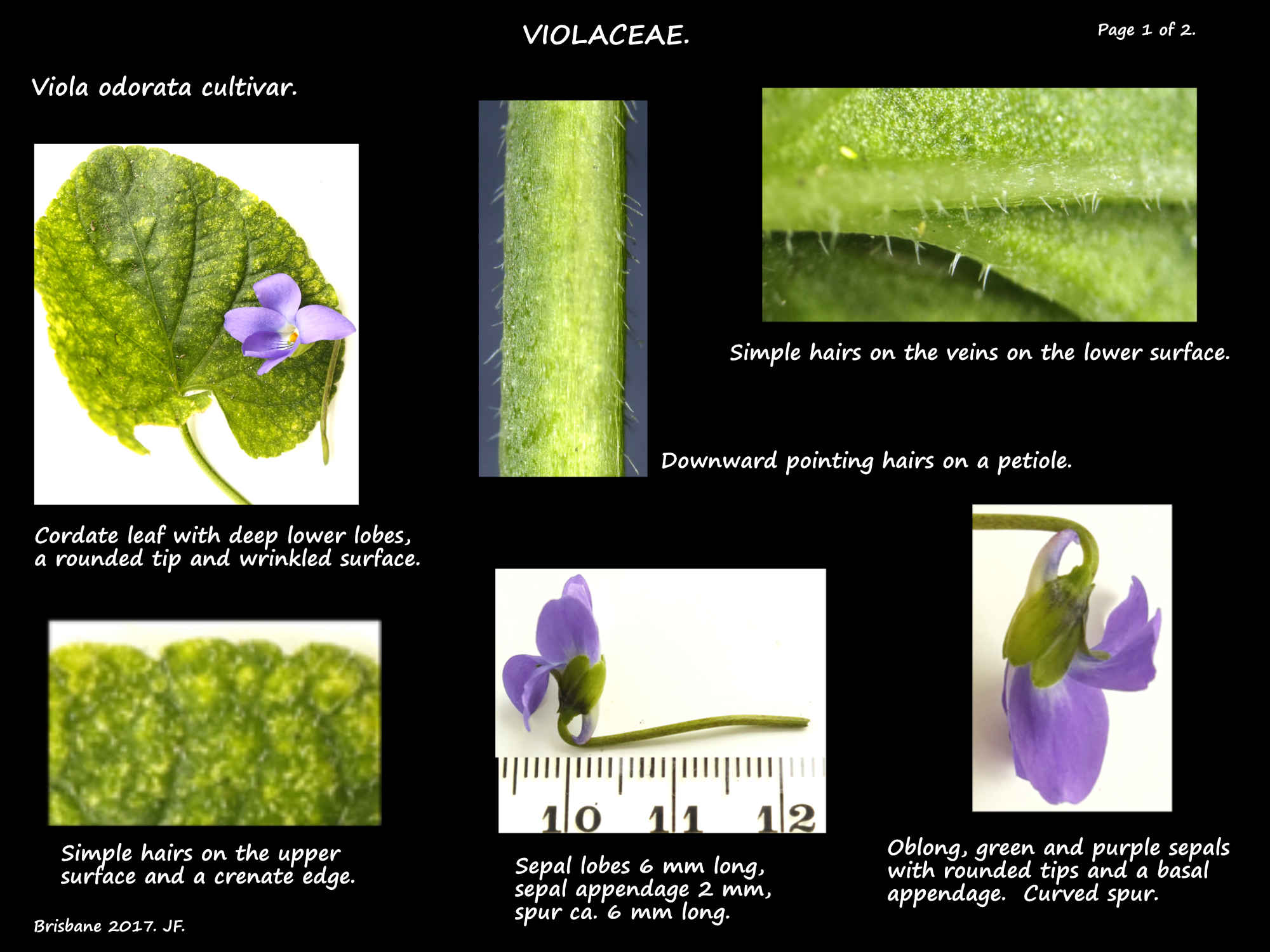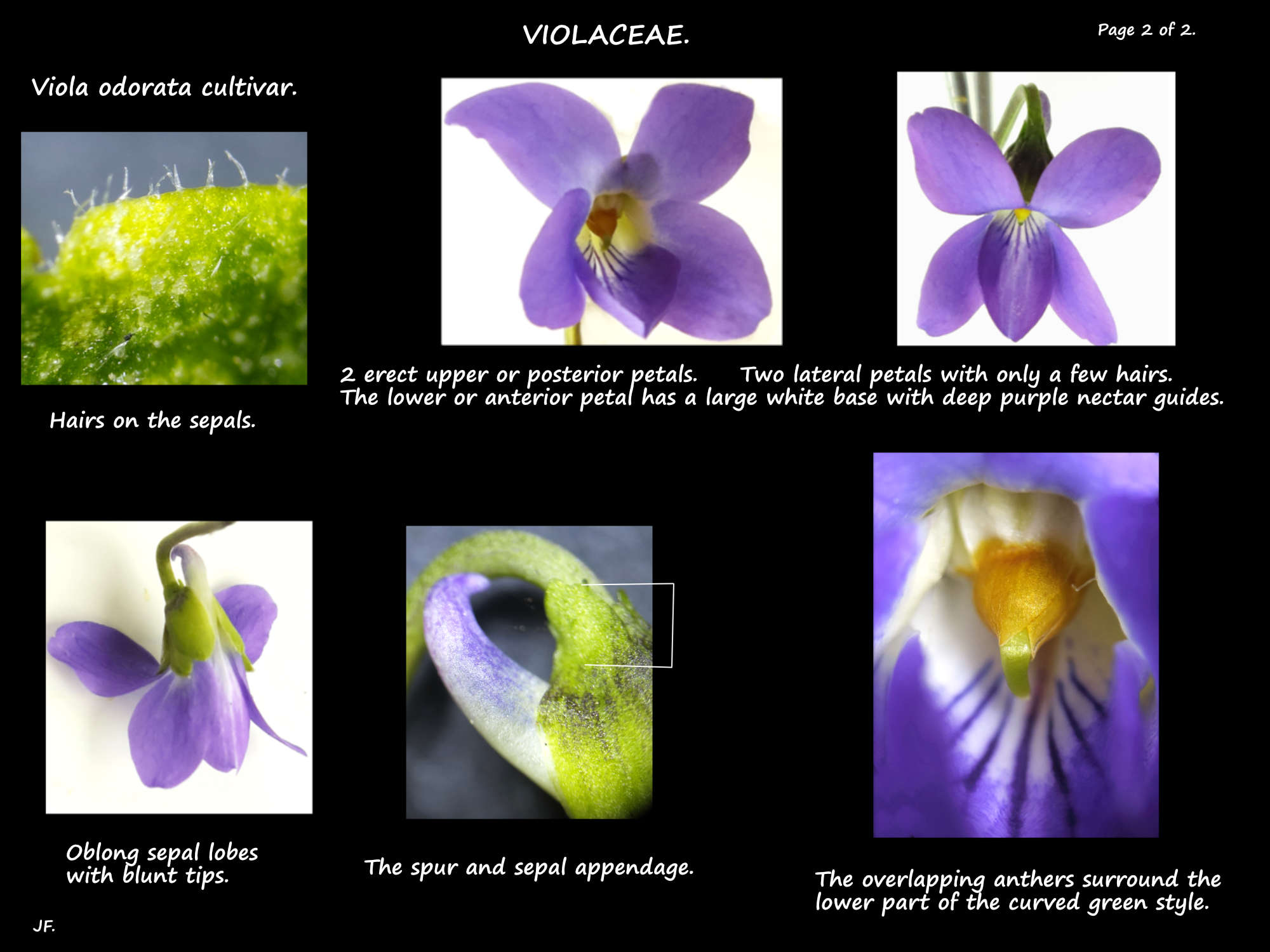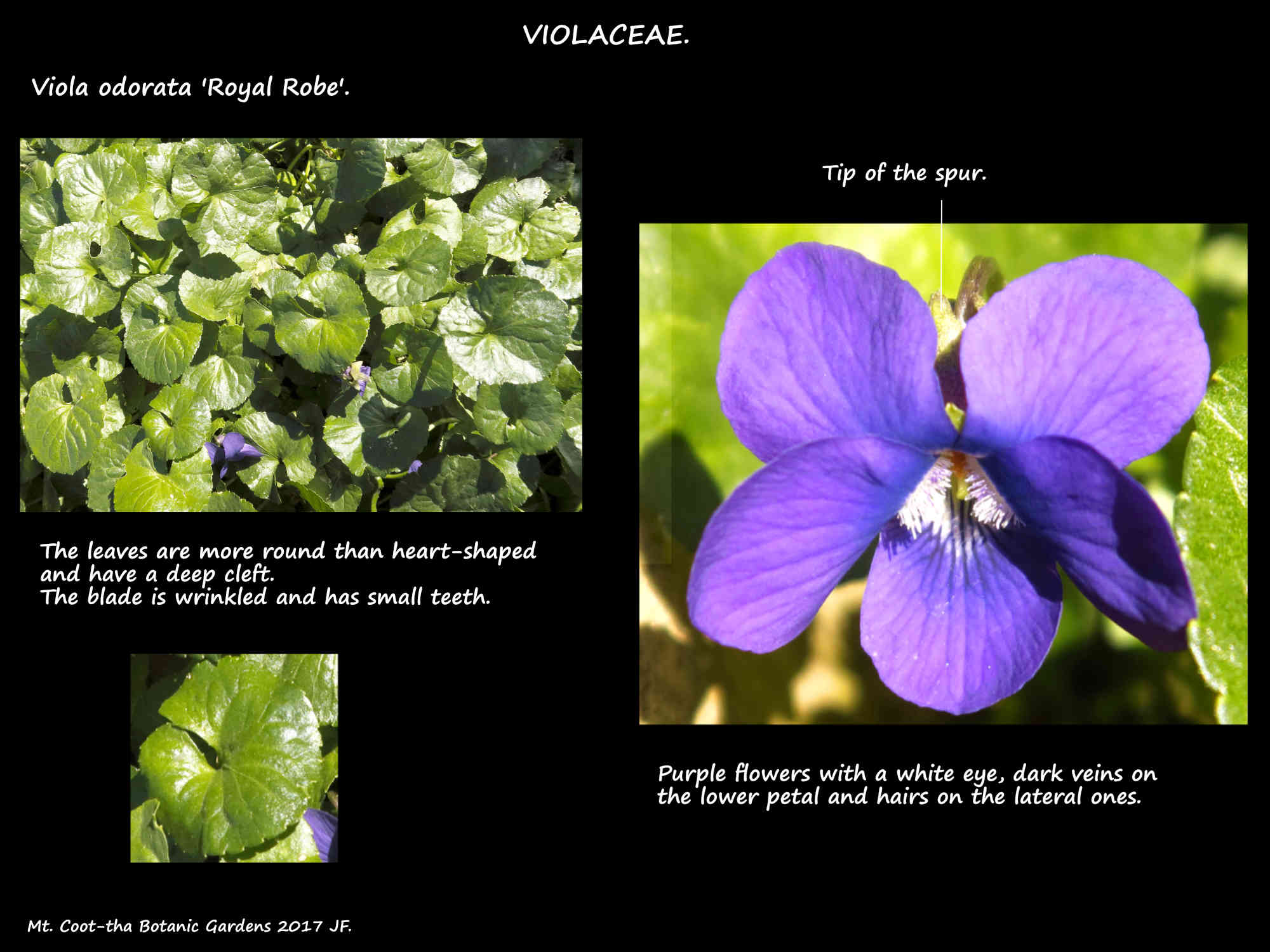Viola odorata.
The Sweet or Common violet, in family Violaceae is naturalised in some areas of Australia.
It has been used as a garden plant but mostly it is the many cultivars that are seen these days.
The features of the species plants and its hybrids are variable making it difficult to separate them sometimes.
V. odorata are perennial herbs around 15 to 20 cm high and spreading up to 60 cm laterally.
The horizontal above ground stems or stolons root at the nodes.
The long, thin, green stolons have scattered hairs.
There are no leafy aerial stems with the leaves arising directly from the nodes.
The leaves in the basal rosette are on petioles up to 20 cm or so long.
The simple hairs on the petioles point downwards but occasional petioles have no hairs.
The 1 cm long lanceolate to ovate stipules have glands and small hairs.
Mature leaf blades are up to 4.5 cm.
Typically they are heart-shaped with deep, rounded basal lobes.
Some leaves may be more kidney-shaped or round.
The edge has shallow scallops to small rounded teeth (crenate).
There are sparse to dense hairs on both blade surfaces.
Inflorescences are solitary, nodding flowers on leafless stalks 12 to 15 cm long.
There may be some hairs on the stalks or pedicels.
There is a pair of small leaf-like bracteoles above the middle of the pedicel with some being directly under the flower.
The fragrant flowers are up to 2 cm across and bilaterally symmetric.
They have 2 upward pointing petals and 3 that point downwards.
Flowers are bisexual but later in the season some do not open but self-fertilise.
The 5 free sepals have lobes around 6 mm long with a basal appendage 2 to 3 mm long.
The oblong lobes have stiff hairs on the edges and a blunt tip.
The 5 petals are also free and have blunt tips.
The upper or posterior pair is obovate and the lateral pair have white hairs in the throat.
The bases of all three are white.
The lower petal has a larger basal white area and more prominent veins that act as nectar guides.
It has a short 3 to 4 mm long curved or straight spur at the base.
There are around 6 varieties but the main one, V. odorata var. odorata has violet to purple petals with
white bases. The lower petal has prominent veins and a purple spur.
V. odorata var. imberbis has white petals without darker veins and a pinkish spur. There are no hairs on the
petioles, pedicels or the side petals.
V. odorata var. dumetorum also has white flowers.
The 5 stamens are on very short filaments that curve around the ovary and the overlapping anthers lie around the
lower part of the style.
There are no hairs on the filaments and the bases of the lower two have nectiferous spurs that lie in the spur of the lower petal.
The superior ovary, with some hairs, consists of 3 fused carpels and has a single locule.
The style is thicker and curved at the top and the stigma has a stigma hole.
The fruit are densely hairy spherical to ovate capsules around 6 mm long.
They split open from the top into 3 valves releasing the 3.5 mm long pale yellow seeds.
There are a number of cultivars including ones with or rose or bluish-purple flowers.
Viola odorata ‘Royal Robe’.
Growing up to 30 cm high it has dark green leaves and its fragrant flowers are dark purple with a white eye.
J.F.




